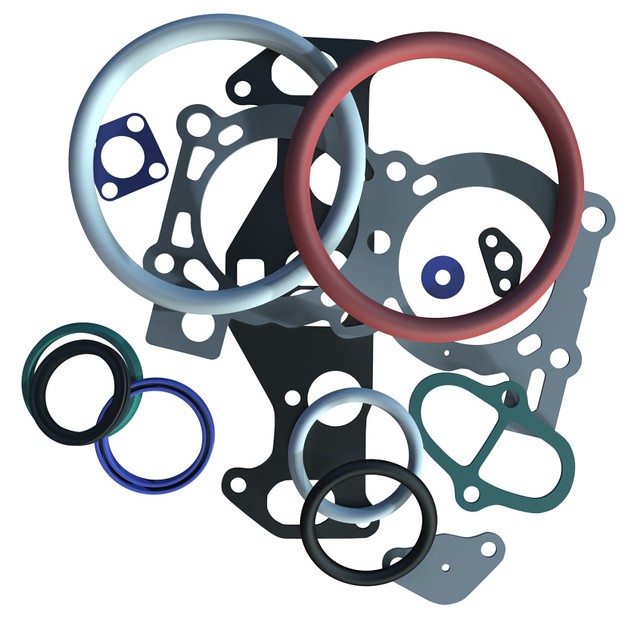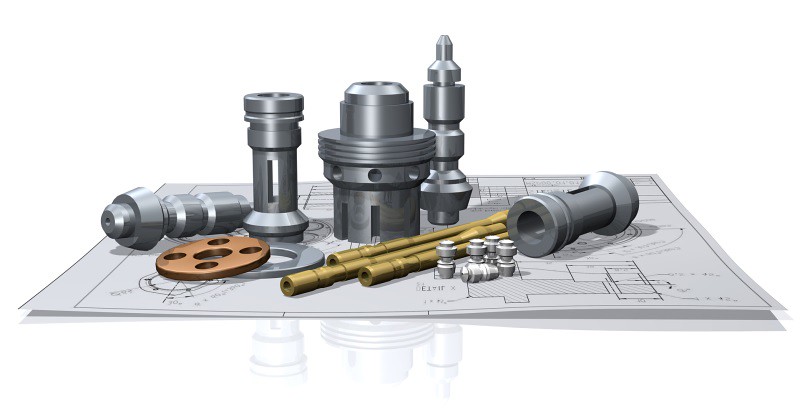Rubber industry started to flourish just few decades ago, but now we can see its immense use across the globe. Rubber molds are one of the most consumable products supplied by the rubber industry.
As the name suggests, these are the moulds made up of rubber. In rubber material, these molds are manufactured in mainly four structures with different manufacturing techniques. This mainly includes pressing die, die-casting mould, injection mould and extrusion mould. Other moulds are inflatable mould, rubber dip mould and there are many other variations to it.
Here, we will try to discuss about these structures and techniques one by one and make an attempt to understand the theory behind their success in different stages.
Pressing die
It is famously known as general die. The material used in making this type of die is semi-finished rubber which is processed through mixing. The mixing technique is a type of manufacturing process which is used to make rubber moulds. In this process, the rubber and all other kinds of the necessary components are mixed together and improve the elastic property of rubber.
After the semi-finished rubber, it is put into the dye, pressurized and heated up in the plate vulcanizing machine. Then the die is molded by the means of heating and pressurization. As this type of die has simple structure and used in wide applications with convenient operation, it is considered as a useful product in the field of rubber molded parts.
Die casting mould
It is also known as transfer-type mould. The main material used in making it is the slab rubber. Simply put the material into the cavity of die-casting mold. By applying pressure on the die, the casting plug squeezes the sizing material. Then the sizing material enters the mould by the means of pouring system. Through this process, die casting mold is finally molded.
This type of mould posses some unique features as and is more complex than the common die, its consistency is excellent and much more. It is mainly used for the complex rubber products.
Injection mould
It is made by sizing material in the plastic state. Through the pouring system, in injection mould the sizing material is vulcanized. Then it is finally molded.
This mould also has a very complex structure. Therefore, it is widely used to produce the complex shaped, large sized, thick wall products. In addition, its efficiency of production is also very high and the quality is stable. Besides, it can also realize automatic production.
Extrusion die
It is a typical mould made by semi-finished rubber. Its manufacturing process is very complex as compared to the other die’s manufacturing process. Its characteristics are similar to that of the injection mould. It also consists of a stable quality and high production efficiency.
According to the varied field of utilization, different types of rubber molds are used in making different items or products. The key molding should be done only when the air is totally removed and mould cavity is filled up with rubber.
For instance, a ball made by using an elliptical shaped extrusion and cut up to an appropriate length with the help of a bar well. The weight of this would be chosen up to a few percent that is from 2% to 10% above from the weight of the final product. This ensures a fully formed product and gives an extra push to the air which is trapped residually.
In order to find the right type of rubber molds the dependency on the nature of the product is inevitable. Hope the information is beneficial for you!
As the name suggests, these are the moulds made up of rubber. In rubber material, these molds are manufactured in mainly four structures with different manufacturing techniques. This mainly includes pressing die, die-casting mould, injection mould and extrusion mould. Other moulds are inflatable mould, rubber dip mould and there are many other variations to it.
Here, we will try to discuss about these structures and techniques one by one and make an attempt to understand the theory behind their success in different stages.
Pressing die
It is famously known as general die. The material used in making this type of die is semi-finished rubber which is processed through mixing. The mixing technique is a type of manufacturing process which is used to make rubber moulds. In this process, the rubber and all other kinds of the necessary components are mixed together and improve the elastic property of rubber.
After the semi-finished rubber, it is put into the dye, pressurized and heated up in the plate vulcanizing machine. Then the die is molded by the means of heating and pressurization. As this type of die has simple structure and used in wide applications with convenient operation, it is considered as a useful product in the field of rubber molded parts.
Die casting mould
It is also known as transfer-type mould. The main material used in making it is the slab rubber. Simply put the material into the cavity of die-casting mold. By applying pressure on the die, the casting plug squeezes the sizing material. Then the sizing material enters the mould by the means of pouring system. Through this process, die casting mold is finally molded.
This type of mould posses some unique features as and is more complex than the common die, its consistency is excellent and much more. It is mainly used for the complex rubber products.
Injection mould
It is made by sizing material in the plastic state. Through the pouring system, in injection mould the sizing material is vulcanized. Then it is finally molded.
This mould also has a very complex structure. Therefore, it is widely used to produce the complex shaped, large sized, thick wall products. In addition, its efficiency of production is also very high and the quality is stable. Besides, it can also realize automatic production.
Extrusion die
It is a typical mould made by semi-finished rubber. Its manufacturing process is very complex as compared to the other die’s manufacturing process. Its characteristics are similar to that of the injection mould. It also consists of a stable quality and high production efficiency.
According to the varied field of utilization, different types of rubber molds are used in making different items or products. The key molding should be done only when the air is totally removed and mould cavity is filled up with rubber.
For instance, a ball made by using an elliptical shaped extrusion and cut up to an appropriate length with the help of a bar well. The weight of this would be chosen up to a few percent that is from 2% to 10% above from the weight of the final product. This ensures a fully formed product and gives an extra push to the air which is trapped residually.
In order to find the right type of rubber molds the dependency on the nature of the product is inevitable. Hope the information is beneficial for you!










